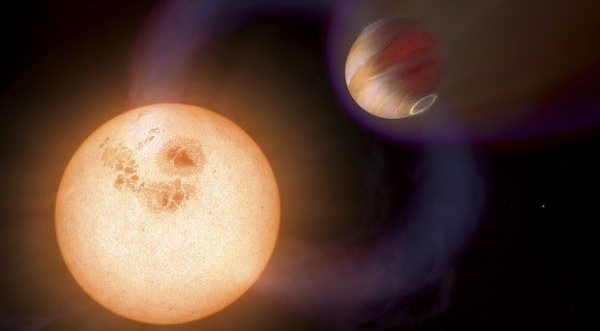Astronomers have identified which of the moons and planets are most likely to
have extraterrestrial life, the BBC reported.
Some space objects with the most favorable conditions for life are Saturnian moon Titan and exo planet Gliese 581g, which is 20.5 light years from Earth..
The international team proposed two indices to assess the likelihood of extraterrestrial life. One shows how they resemble the Earth and the other - how are inhabited.
The first index into account the size, density, distance from the star.
The second examines various factors - whether the surface is rocky or frozen, whether cosmic object has an atmosphere and magnetic field. It takes into account how energy exists for the organism, whether it is the source of light from the star system or the effect of tidal forces, which, because of gravitational attraction of another planet or moon object is heated internally.
Index reported occupancy and chemical indicators - whether organic compounds and liquid solvents for vital chemical reactions.
Maximum value at the first index is a natural Earth - 1.00. The highest values obtained outside the solar system Gliese 581g - 0,89, and on another planet orbiting the same star Gliese 581d - 0,74.
Gliese 581 system is well established. It consists of four and possibly five planets orbiting a red dwarf.
HD 69830 d - exoplanet with the size of Neptune, orbiting another star, also has high performance - 0.60 points.
It is believed that it is in so-called "golden zone" - where surface temperatures are neither too high nor too low for life.
With the highest ratings in the solar system are Mars - Mercury and 0.70 - 0.60.
Occupancy index gave different results. Top ranked Saturnian moon Titan - 0.64, followed by Mars (0.59) and Jupiter's moon Europe (0.47). Of exoplanets highest qualified Gliese 581 g (0,49) and Gliese 581 d (0,43).
Searching for potentially habitable planets outside the solar system for several years is very active. Telescope "Kepler" NASA, which was launched in 2009, found more than 1,000 candidates planets.
Future telescopes will be even more sophisticated and can even detect so. biomarkers in the light emanating from distant planets, the presence of chlorophyll, which is a key pigment in plants.
Some space objects with the most favorable conditions for life are Saturnian moon Titan and exo planet Gliese 581g, which is 20.5 light years from Earth..
The international team proposed two indices to assess the likelihood of extraterrestrial life. One shows how they resemble the Earth and the other - how are inhabited.
The first index into account the size, density, distance from the star.
The second examines various factors - whether the surface is rocky or frozen, whether cosmic object has an atmosphere and magnetic field. It takes into account how energy exists for the organism, whether it is the source of light from the star system or the effect of tidal forces, which, because of gravitational attraction of another planet or moon object is heated internally.
Index reported occupancy and chemical indicators - whether organic compounds and liquid solvents for vital chemical reactions.
Maximum value at the first index is a natural Earth - 1.00. The highest values obtained outside the solar system Gliese 581g - 0,89, and on another planet orbiting the same star Gliese 581d - 0,74.
Gliese 581 system is well established. It consists of four and possibly five planets orbiting a red dwarf.
HD 69830 d - exoplanet with the size of Neptune, orbiting another star, also has high performance - 0.60 points.
It is believed that it is in so-called "golden zone" - where surface temperatures are neither too high nor too low for life.
With the highest ratings in the solar system are Mars - Mercury and 0.70 - 0.60.
Occupancy index gave different results. Top ranked Saturnian moon Titan - 0.64, followed by Mars (0.59) and Jupiter's moon Europe (0.47). Of exoplanets highest qualified Gliese 581 g (0,49) and Gliese 581 d (0,43).
Searching for potentially habitable planets outside the solar system for several years is very active. Telescope "Kepler" NASA, which was launched in 2009, found more than 1,000 candidates planets.
Future telescopes will be even more sophisticated and can even detect so. biomarkers in the light emanating from distant planets, the presence of chlorophyll, which is a key pigment in plants.
